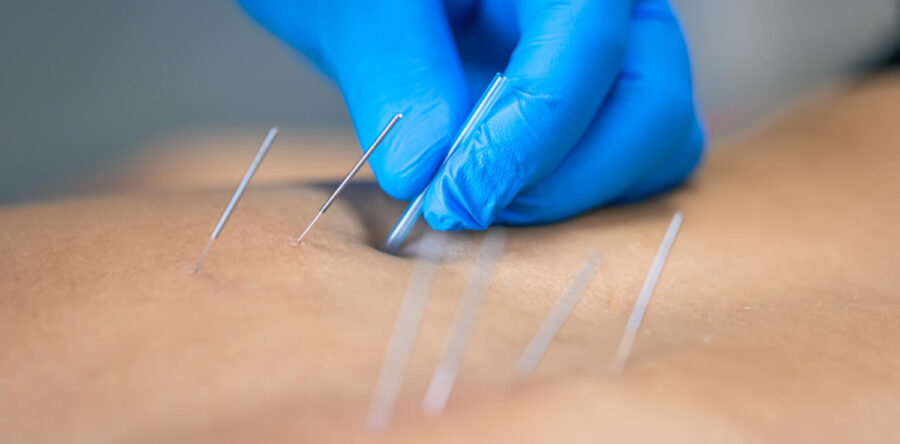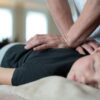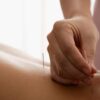We constantly seek the most effective treatments to ensure our clients can return to their daily activities as quickly and safely as possible. Muscle strains are a common issue, particularly among active individuals and those engaged in physical work or sports. Traditional treatments like ice, rest, and elevation are well-known, but we also employ innovative techniques such as Intramuscular Stimulation (IMS) and dry needling to enhance recovery and pain relief.
Explaining IMS and Dry Needling: What You Need to Know
We embrace a variety of therapeutic techniques, including Intramuscular Stimulation (IMS) and dry needling. Both are advanced forms of therapy used to alleviate muscle pain, but it's crucial to understand their specific applications and mechanisms. IMS is primarily focused on the deep treatment of chronic muscle pain, involving the insertion of fine needles into areas of muscle shortening to release tension and relieve pain. Its role is to target neuropathic pain by stimulating the nerve roots that are believed to be causing the ailment.
Dry needling, while similar in its use of needles, differs as it specifically targets trigger points—tight knots in the muscles that can cause pain over large areas. The needles help release these knots, easing muscle strain and improving flexibility. It’s not associated with traditional Chinese medicine acupuncture but is supported by modern medical principles, primarily aimed at treating musculoskeletal problems. Understanding these differences helps us apply the right method based on your specific condition, ensuring effective and targeted pain relief.
How IMS and Dry Needling Target Muscle Strains
When it comes to muscle strains, IMS and dry needling offer a particularly beneficial approach. Muscle strains, often resulting from overexertion or improper use of a muscle, lead to significant discomfort and limited mobility. In our practice, we use IMS to treat the deep-seated nerve problems that cause muscular pain and chronic muscle contraction. This is particularly helpful for muscle strains as it addresses both the symptoms and the root cause by relaxing the muscle and reducing nerve irritability.
Dry needling, on the other hand, is exceptionally effective in dealing with acute muscle strains. By inserting needles directly into the affected muscle's trigger points, dry needling works to alleviate the taut bands of muscle fibers, promote increased blood flow, and enhance the healing process. This approach not only diminishes pain but also speeds up recovery time, helping restore muscle function more quickly. By utilizing these techniques, we provide comprehensive care that targets the specific needs of our patients suffering from muscle strains, enhancing their recovery journey.
Benefits of IMS and Dry Needling for Muscle Recovery
We've observed profound benefits when using IMS and dry needling as part of an integrated approach towards muscle recovery. These techniques are particularly effective for patients with lingering pain and stiffness, providing relief that can be difficult to achieve through more conventional methods. IMS uses a mechanism that targets muscular shortening, which is often a result of chronic pain. By resetting the muscle tone and encouraging healing at the nerve root, IMS helps restore the natural function of muscles and nerves, reducing pain and facilitating a return to normal activities.
Dry needling, by directly targeting trigger points—hyperirritable spots in skeletal muscle—helps alleviate not only the local area but also referred pain which may not be responsive to other treatments. This approach is instrumental in breaking the cycle of pain and muscle spasm to enhance blood flow and nutrient-rich blood circulation to the affected areas, accelerating the healing process and reducing inflammation. Together, these treatments offer a powerful solution to muscle recovery, capable of addressing both the symptoms and the underlying cause of discomfort.
Preparing for Your First IMS or Dry Needling Session
Before you arrive for your first IMS or dry needling session, there are a few things you should know to prepare. First, it’s important to understand that while these treatments involve needles, the discomfort is minimal. Most people describe the sensation as a small muscle cramp with immediate relief. It’s also helpful to wear loose, comfortable clothing that allows easy access to the area being treated.
During the session, our trained physiotherapists will guide you through every step, ensuring you understand what is happening and why each action is necessary. We aim to create a relaxed environment where you can feel calm and supported. After the session, you might experience some sore - a normal response that indicates your muscles are adjusting to the treatment. Drinking plenty of water and performing gentle stretching exercises as recommended by your physiotherapist can help alleviate this soreness more rapidly.
Conclusion
At Whitehorse Physiotherapy, we are dedicated to providing comprehensive and effective physiotherapeutic care. IMS and dry needling are just two of the various advanced treatment options we offer to facilitate muscle recovery and enhance overall well-being. Our expert team is committed to adopting the latest techniques and treatments proven to aid in the recovery and health of our patients. If you suffer from persistent muscle strains or any related conditions, these therapies might offer the relief you've been seeking.
For more information, visit our Whitehorse walk-in clinic. Let us help you take your first step towards a pain-free life.





